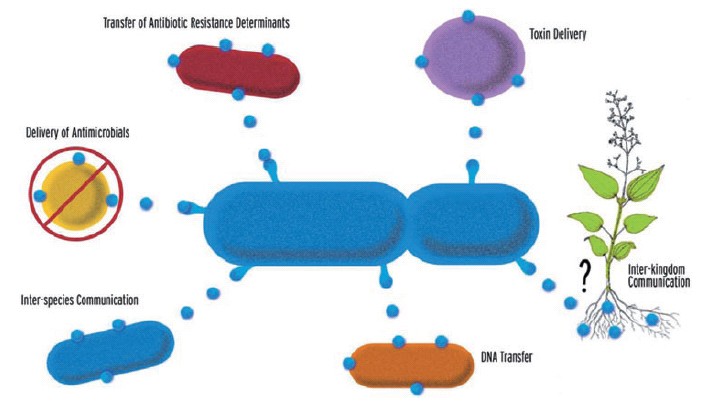Team:BCCS-Bristol/Project
From 2009.igem.org
| Line 3: | Line 3: | ||
<html> | <html> | ||
<center> | <center> | ||
| - | <img style="width:750px" src=" | + | <img style="width:750px" src="https://2009.igem.org/Image:Bccs_igem_banner.png" > |
</center> | </center> | ||
</html> | </html> | ||
Revision as of 21:51, 21 October 2009
iGEM 2009

 |  |
| Click above to read more about our team's modelling approach and the simulations we performed to assess the effectiveness of OMV based communication. | Click above to read more about our wet-lab work . |
Project description
Our aim was to construct a system for directed delivery of proteins into cells by outer membrane vesicle (OMV) protein secretion. Gram-negative bacteria naturally produce outer member vesicles (OMVs): spherical, bilayered proteolipids from 20-200nm in diameter. OMVs can carry outer membrane, periplasmic and cytoplasmic proteins, DNA, RNA and other factors associated with virulence. They have been implicated in the delivery of toxins to host cells, in the transfer of proteins and genetic materials between bacterial cells and in cell-to-cell signalling [2]. Synthetic biology offers the potential to engineer these mechanisms for human benefit, for example, the injection of toxic cocktails of proteins into cancerous cells or the replacement of proteins missing as a result of genetic defects [3]. These systems may be further enhanced by localised delivery of OMVs, for example, via the control of magnetotactic bacteria using external magnetic fields [5].
We designed Biobricks with the potential to allow the secretion of any protein in OMVs via fusion with novel, non-toxic partners known to be enhanced in OMVs, like FhuA and OsmE proteins. We hope that the Biobricks will become widely used as a simple and effective means of protein secretion, whilst also conveying the unique engineering advantages of vesicular encapsulation. In order to allow easy protein fusions we designed and created a new protein fusion assembly standard, [http://hdl.handle.net/1721.1/49505 RFC44], that provides the basis of a solution to a biobrick-friendly protein fusion mechanism that supports the current favorite assembly standard 10 (RFC10) and hence allows utilization of most of the current biobricks database.
Mechanisms of OMV secretion were implemented into BSim, the award-winning modelling framework developed by last year’s Bristol team [1], to assist in experimental design and to test speculative ideas. BSim was improved and updated with new features such as the ability to integrate GRN's and ODE's, fluidic 3D Dynamic environment and realistic agent motion. Different case studies were tested such as magnetotaxis and the repressilator. The BSim code has been functionalised in such way that the user can have direct contact with the programming interface and can add functions to test a variety of hypotheses.
References
[1] https://2008.igem.org/Team:BCCS-Bristol/Modeling, true 30th July 2009
[2] Global proteomic profiling of native outer membrane vesicles derived from Escherichia coli, [http://dx.doi.org/doi:10.1002/pmic.200700196 doi:10.1002/pmic.200700196]
[3] Engineered Bacterial Outer Membrane Vesicles with Enhanced Functionality, [http://dx.doi.org/doi:10.1016/j.jmb.2008.03.076 doi:10.1016/j.jmb.2008.03.076]
[4] Special delivery: vesicle trafficking in prokaryotes, [http://dx.doi.org/doi:10.1111/j.1365-2958.2006.05272.x doi:10.1111/j.1365-2958.2006.05272.x]
[5] Controlled manipulation and actuation of micro-objects with magnetotactic bacteria, [http://dx.doi.org/doi:10.1063/1.2402221 doi:10.1063/1.2402221]
 "
"
